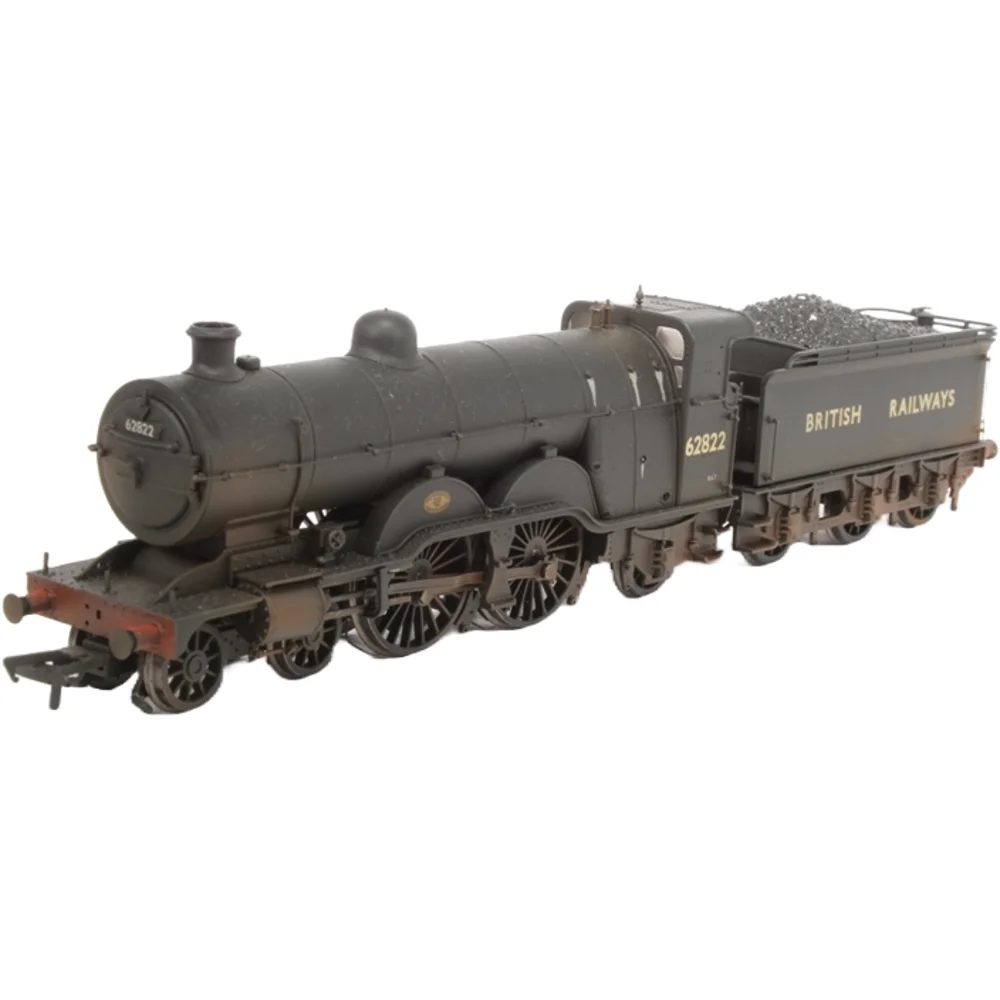Bachmann 31-766NRMA
London & North Eastern Railway C1 62822 British Railways Black
Tooling
Announced in 2015 as part of Bachmann’s Branchline range, the Ivatt C1 ‘Large Atlantic’ represented a significant milestone for British outline ready-to-run models. The prototype, designed by Henry Ivatt for the Great Northern Railway in 1902, was a 4-4-2 express passenger locomotive that later became the LNER C1. These engines were pivotal in the development of high-speed East Coast services and influenced subsequent wide-firebox designs. The Bachmann model was initially commissioned as a National Collection model for Locomotion Models before entering the main range in multiple liveries.
Tooling Features
- Scale: OO gauge (1:76) on 16.5mm track.
- Construction: Plastic bodyshell with a die-cast metal chassis for strength and weight distribution.
- Detailing: Highly detailed footplate with gauges, piping, and working firehole door shield; separately fitted vacuum and steam pipes, brake rodding, guard irons, drain cocks, and cosmetic screw-link couplings. Turned metal whistle and safety valves add finesse.
- Couplings: NEM pockets with tension-lock couplers supplied; provision for cosmetic screw-link couplings.
Mechanical & Electrical
- Motor & Drive: 12V DC 3-pole motor driving the rear coupled axle via a gear train (no flywheel).
- Pickups: On driving wheels, trailing truck, and tender axles for reliable current collection.
- Minimum Radius: Second radius (438mm) recommended.
- Weight: Approx. 367g, aiding smooth running and haulage of up to eight Mk1 coaches in tests.
- Lighting: No factory-fitted lighting; cab detail is fully painted.
DCC Capability
- DCC Ready with a 21-pin NEM socket located in the tender. Space provided for a speaker if sound decoder is fitted.
Liveries Produced
- GNR lined green (No. 251 and others)
- LNER apple green with black/white lining
- BR unlined black (weathered variants for NRM exclusives)
These covered eras from pre-grouping through LNER and early BR service.
Reviews & Commentary
The model received widespread acclaim for its accuracy and finish. Reviews praised its smooth running, excellent weight balance, and fine lining, noting the ability to handle tight pointwork without issue. Detail highlights include the backhead and motion, though some reviewers mentioned minor compromises in connecting rod geometry due to OO standards.
Social media and forums echoed these sentiments, calling it “a beauty in all respects” and “amazingly, the first RTR OO Atlantic despite its historical importance.”
Interesting Notes
- Initially exclusive to Locomotion Models as a National Collection model before general release.
- Represents the preserved GNR No. 251, the sole surviving Ivatt Atlantic in the UK National Collection.
- The tooling includes provision for fine-scale detailing parts, making it popular among enthusiasts seeking authenticity.
Class & Prototype
- Class: London & North Eastern Railway C1
- Traction: Steam
- Built: 1902-1910
- Total Built: 94
- Running Number: 62822
Operator & Livery
- Operator: British Railways
- Livery: Black
- Era: 3 - The big 4 – LMS, GWR, LNER & SR
British Railways transformed Britain's fragmented rail network into a unified national system following nationalisation on 1st January 1948. Created from the "Big Four" companies under the Transport Act 1947, BR operated most of Great Britain's railways until rebranding as British Rail in 1965, managing over 20,000 route miles and inheriting nearly 20,000 locomotives of diverse designs.
The organisation pioneered standardisation through its revolutionary BR Standard locomotive programme (1951-1960), producing 999 advanced steam engines under Robert Riddles' direction. These included the versatile Britannia Pacifics, mighty 9F freight engines, and mixed-traffic classes that incorporated the best features from all predecessor companies. The 1955 Modernisation Plan accelerated diesel and electric traction development, creating fascinating mixed-traction operations.
Notable achievements included establishing unified locomotive classification systems, introducing distinctive corporate liveries, and managing the complex transition from steam to modern traction. BR's six regional structure preserved operational diversity whilst enabling standardisation of practices, signalling, and rolling stock that had eluded private enterprise for over a century.
The BR era represents steam traction's final flowering alongside emerging diesel technology, creating unparalleled locomotive variety. Today, this heritage remains highly popular with railway enthusiasts through extensive preserved fleets, heritage railway operations, and comprehensive model ranges from manufacturers like Hornby, Bachmann, and Dapol, making BR subjects essential for authentic post-war British railway modelling across all scales.
